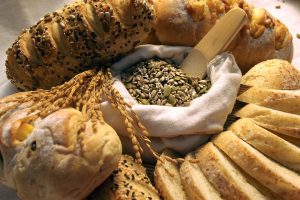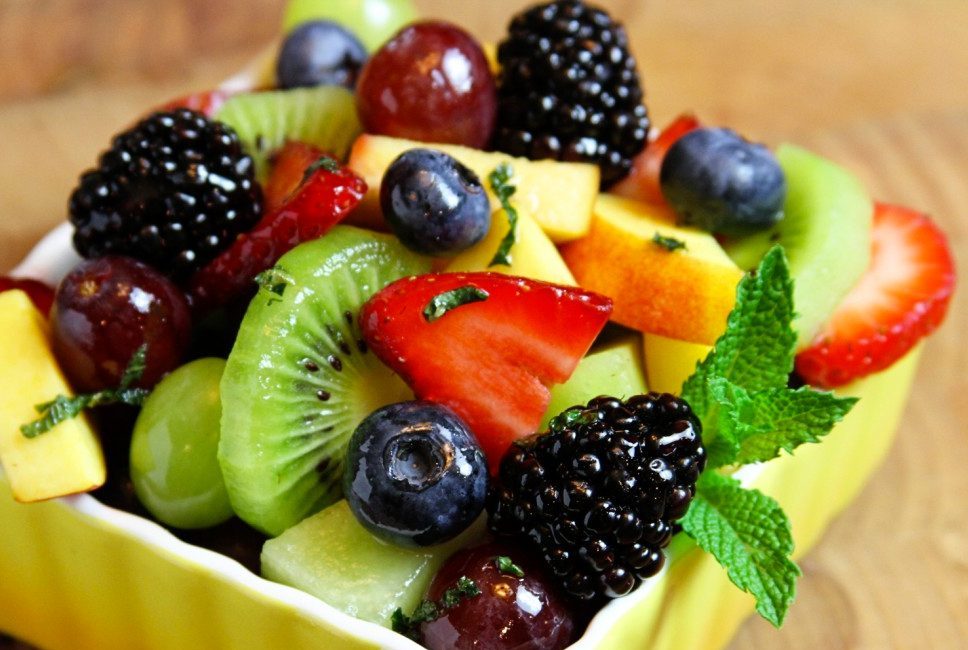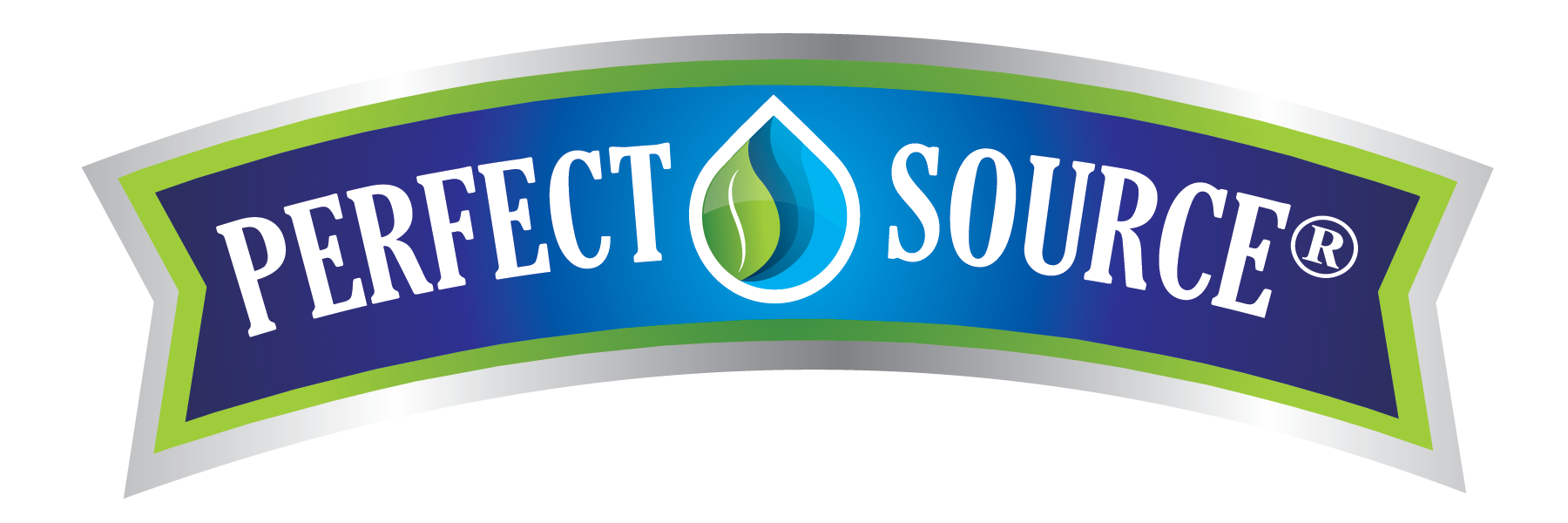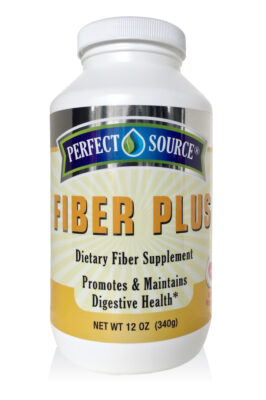ABOUT DIETARY FIBER – Fiber Plus
 WHY THE INTEREST IN FIBER?
WHY THE INTEREST IN FIBER?
Many health experts are advising people of all ages to consume more dietary fiber. Much research suggests that fiber may prevent cancer, diabetes, heart disease and obesity. With all of this news, you may be wondering what exactly is fiber? Where do I get it? And, does it really work?
FIRST, WHAT EXACTLY IS DIETARY FIBER?
Dietary fiber is a complex mixture of plant materials that are resistant to breakdown (digestion) by the human digestive system. You may hear some people refer to fiber as “roughage” or the material that gives food its ‘crunch’. Technically, fiber is the material that gives plants their strength and structure. Since fiber is a plant material, this means that any food that comes from animals (beef, chicken, milk, cheese, etc.) contains no fiber.
There are two major kinds of dietary fiber — insoluble (cellulose, hemicellulose, lignin) and soluble (gums, mucilage, pectin, psyllium). Insoluble fiber is mostly found in whole-grain products such as whole-wheat bread. Soluble fiber is found in fresh fruits and vegetables, dried beans, peas, lentils, and psyllium. Insoluble fibers do not dissolve in water, whereas, soluble fibers do. Because of differences in solubility, the effect on the body is different.



WHY DO WE NEED DIETARY FIBER?
Dietary fiber has received considerable attention in both the popular press and scientific literature because of its significant effects on the stomach and intestines, specifically as a mainstay of treatment for constipation and hemorrhoids. Insoluble fiber promotes normal elimination by providing bulk for stool formation and thus hastening the passage of the stool through the colon.
This may help with constipation and hemorrhoid problems, often experienced during pregnancy. The best remedy for these conditions is a high-fiber diet and plenty of water and exercise. Your doctor may prescribe an all-natural fiber supplement like Fiber Plus. The fiber in FIBER PLUS is safe and effective for pregnant women and their babies.
Studies also indicate that soluble fibers may play a role in reducing the level of cholesterol in the blood. Simply adding a fiber supplement to your daily routine is proving to be a very effective, all natural approach to cholesterol lowering. In a recent trial examining the effects of fiber supplementation, total cholesterol and LDL cholesterol (bad cholesterol) decreased, while HDL cholesterol (good cholesterol) increased. As a result, high-fiber, low-fat diets have been recommended to decrease the incidence of heart disease and high cholesterol. How fiber works its magic still isn’t clear, but scientists suspect that it coaxes the body to make more cholesterol out of the blood, preventing it from forming plaques in the arteries and causing heart disease.
Increasing the intake of soluble dietary fiber appears to benefit patients with diabetes mellitus as well. This is accomplished by coating the gut’s lining and delaying stomach emptying. As a result, sugar absorption slows after a meal and may reduce the amount of insulin needed.
Not only does fiber prevent absorption of fat and delay the absorption of sugar, but it also helps you to feel full faster. As you fill up on high fiber foods like grains, fruits and vegetables, you’ll have less room for high-fat and highly caloric low-fiber foods. And fewer calories mean that eating fiber helps to maintain a healthy weight.
Some researchers have calculated that if Americans doubled their intake of fiber, they could cut 100 calories from their diet a day. That could shave off 10 pounds of yearly weight gain.
Fiber is a weight watchers dream. Since fiber takes up space in the stomach, making us feel full, we eat less fat, less calories, and less food overall.
EXPERTS LINKS
Health and nutrition professionals, as well as health organizations such as the American Heart Association, the American Dietetics Association and the National Heart, Lung and Blood Institute recommend eating 25 to 38 grams of fiber each day.
At Perfect Source we want you to obtain adequate dietary fiber required for regularity from your diet and want to help educate the public of proper dietary practices. We understand this is easier said than done, we’re here to help you and your family bridge the gap!
HOW MUCH FIBER DO YOU NEED?
Several health organizations and the Federal Government have stressed the importance of dietary fiber. The National Cancer Institute recommends 25 to 35 grams of fiber per day. To put that in perspective, 25-35 grams of fiber is equivalent to approximately 8-13 apples per day or 12 bowls of raisin bran or 12-16 slices of whole-wheat bread.
HOW MUCH DIETARY FIBER DO AMERICANS EAT?
According to recent USDA surveys, the average daily intake of dietary fiber by women 19 to 50 years of age is about 12 grams. Intake by men of the same age is about 17 grams. The difference between the amount of fiber we do consume and the amount we should consume is called the “fiber gap”. The problem, is that most popular American foods are not high in dietary fiber. The United States has one of the lowest per capita intakes of fiber in the world. Therefore, decreasing the fiber gap by increasing daily fiber intake, either through diet or with supplements, is recommended for most Americans.
HOW CAN WE CLOSE THE FIBER GAP?
Eating a variety of foods that contain dietary fiber is the best way to get an adequate amount. However, sometimes even the most disciplined eaters have a difficult time meeting the 25-35 gram goal. If you have problems getting enough fiber in your diet, consider adding a fiber supplement. A supplement containing psyllium is the best choice. An unflavored fiber supplement, such as FIBER PLUS, can be taken with a variety of fruit juices, which not only adds variety but also extra vitamins and minerals to your daily regimen.
WHAT FOODS SUPPLY WHICH FIBER?
A good source of dietary fiber is defined as a food that contains at least 2 grams of dietary fiber per serving. It is important to include foods that contain both soluble and insoluble fiber.
Insoluble Fiber: Fruits, vegetables, dried beans, wheat bran, seeds, popcorn, brown rice and whole grain products such as breads, cereals and pasta.
Soluble Fiber: Fruits such as apples, oranges, pears, peaches, and grapes. Vegetables, seeds, oat bran, dried beans, oatmeal, barley and rye. Prunes are also high in soluble fiber.
Dietary fiber can be reduced in foods during preparation and cooking. To retain dietary fiber: 1) serve fruits and vegetables with edible skins and seeds, and 2) use whole-grain flours.
WHAT NEXT?
Convinced of the benefits of increasing fiber in your diet? Don’t jump on the bandwagon too fast. Incorporate fiber into your diet gradually to prevent the gas and bloating that can occur if your body is unaccustomed to digesting fiber in large amounts. And, drink at least 8 cups of water daily to keep the fiber moving through your system.
While the jury is still out on fiber’s ability to prevent diseases such as cancer, scientific evidence, however, backs fiber’s disease-preventing potency. Fiber is not glamorous and is sometimes unappreciated, but don’t underestimate its importance for your good health! It will help you feel healthier in the short-term and plays an important role in disease prevention in the long-term.
Remember to increase the amount of both kinds of fiber. Below are some tips to help:
- Choose fresh fruits or vegetables rather than juice.
- Eat the skin and membranes of cleaned fruits and vegetables.
- Choose bran and whole grain breads/cereals daily.
- An increase in fiber should be accompanied with an increase in water.
- Eat less processed foods and more fresh foods.
If you still cannot get recommended amounts of fiber in your diet, consider a good supplement.
Cardiovascular
Recent studies indicate that soluble fiber, like the kind found in FIBER PLUS, may lower overall cholesterol levels. These studies show that decreasing fat intake and increasing consumption of soluble fiber can help lower LDL levels — the “bad” cholesterol. LDL is the type of cholesterol that can clog arteries and lead to heart disease.
Irritable Bowel Syndrom
This disorder is characterized by the irregularity of muscular contractions, which normally move fecal mass through the colon, resulting in diarrhea, constipation or both. IBS may coincide with a high degree of emotional distress. Dietary fiber seems to reduce the abdominal discomfort and allows the colon to relax, resulting in consistent bowel movements on a regular basis.
Diverticulitus
Approximately 30 million Americans suffer from diverticulosis. Diverticulosis is a condition wherein small bulges or sacks are created in the walls of the colon. Sufferers may experience constipation alternating with diarrhea and may have pain in the lower-left abdomen. Doctors have found that a diet high in fiber is beneficial in relieving symptoms in most cases.
Hemmoroids
These enlarged veins of the rectum and anus, produced by straining during elimination of waste materials, are often further irritated by constipation. Fiber produces a softer fecal mass and encourages better regularity with less straining and irritation.
Constipation
Fiber increases the amount of water content in fecal matter, creating more bulk and softer, well-formed stools. It helps the bowel system function naturally and avoids the harsh, irritating effects of habit-forming, stimulant laxatives.
Fiber Recipes
Mixing Tip: For maximum palatability, add ice cubes and use a blender. Shaking in a plastic container or jar is far superior to merely stirring. Drink immediately after mixing. Note: If you’re just starting to increase your dietary fiber intake therapy, use only 1/2 teaspoon for the first few days then gradually increase your serving size.
Hawaii
- 8 oz. cup of chilled pineapple juice (canned or frozen)
- 1 rounded teaspoon of Fiber Plus
Grape
- 8 oz. cup of grape juice
- 1 rounded teaspoon of Fiber Plus
- Splash of lime juice if desired
Fiber Driver
- 8 oz. cup of orange or grapefruit juice
- 1 rounded teaspoon of Fiber Plus








